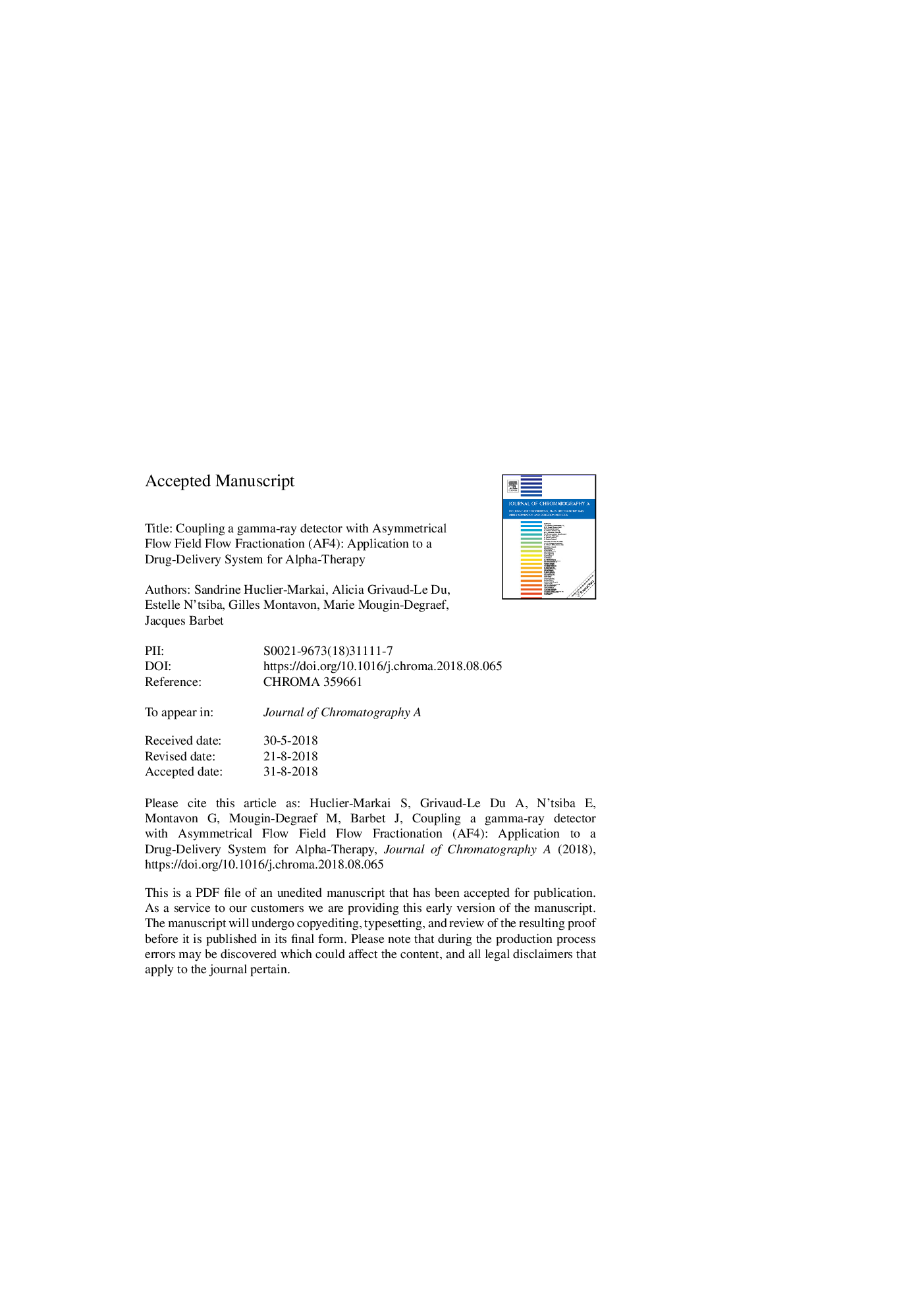| کد مقاله | کد نشریه | سال انتشار | مقاله انگلیسی | نسخه تمام متن |
|---|---|---|---|---|
| 11016079 | 1781692 | 2018 | 31 صفحه PDF | دانلود رایگان |
عنوان انگلیسی مقاله ISI
Coupling a gamma-ray detector with asymmetrical flow field flow fractionation (AF4): Application to a drug-delivery system for alpha-therapy
دانلود مقاله + سفارش ترجمه
دانلود مقاله ISI انگلیسی
رایگان برای ایرانیان
موضوعات مرتبط
مهندسی و علوم پایه
شیمی
شیمی آنالیزی یا شیمی تجزیه
پیش نمایش صفحه اول مقاله

چکیده انگلیسی
Alpha-particle-emitting radionuclides have been the subject of considerable investigation as cancer therapeutics, since they have the advantages of high potency and specificity. Among α-emitting radionuclides that are medically relevant and currently available, the lead-212/bismuth-212 radionuclide pair could constitute an in vivo generator. Considering its short half-life (T1/2â=â60.6âmin), 212Bi can only be delivered using labelled carrier molecules that would rapidly accumulate in the target tumor. To expand the range of applications, an interesting method is to use its longer half-life parent 212Pb (T1/2â=â10.6âh) that decays to 212Bi. The challenge consists in keeping 212Bi bound to the vector after the 212Pb decay. Preclinical and clinical studies have shown that a variety of vectors may be used to target alpha-emitting radionuclides to cancer cells. Nanoparticles, notably liposomes, allow combined targeting options, achieving high specific activities, easier combination of imaging and therapy and development of multimodality therapeutic agents (e.g., radionuclide therapy plus chemotherapy). The aim of this work consists in assessing the in vitro stability of 212Pb/212Bi encapsulation in the liposomes. Indeed, the release of the radionuclide from the carrier molecules might causes toxicity to normal tissues. To reach this goal, Asymmetrical Flow Field-Flow Fractionation (AF4) coupled with a Multi-Angle Light Scattering detector (MALS) was used and coupling with a gamma (γ)âray detector was developed. AF4-MALS-γ was shown to be a powerful tool for monitoring the liposome size together with the incorporation of the high energy alpha emitter. This was successfully extended to assess the stability of 212Bi-radiolabelled liposomes in serum showing that more than 85% of 212Pb/212Bi is retained after 24âh of incubation at 37â°C.
ناشر
Database: Elsevier - ScienceDirect (ساینس دایرکت)
Journal: Journal of Chromatography A - Volume 1573, 26 October 2018, Pages 107-114
Journal: Journal of Chromatography A - Volume 1573, 26 October 2018, Pages 107-114
نویسندگان
Sandrine Huclier-Markai, Alicia Grivaud-Le Du, Estelle N'tsiba, Gilles Montavon, Marie Mougin-Degraef, Jacques Barbet,